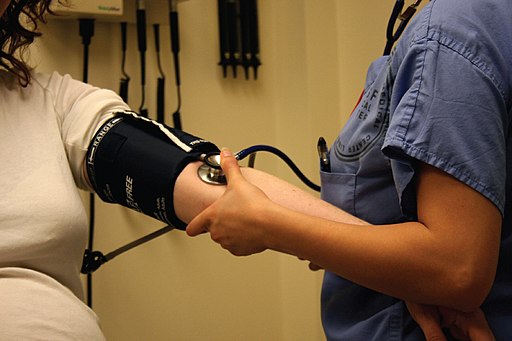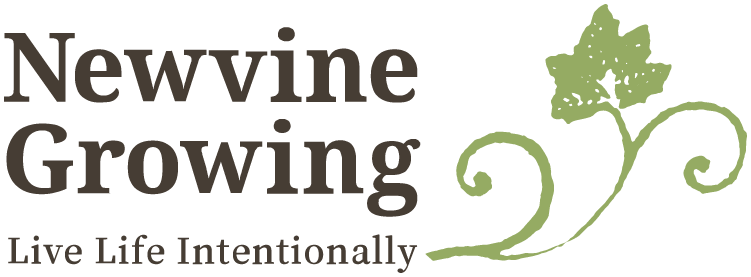For years, when my Eastern European nurse took my blood pressure at my annual physical, she would fix a serious gaze and murmur in her thick accent, “Perfect.”
It’s a strange thing to be proud of, but for an A student, every gold star is worth celebrating. I would say thank you, like this was an accomplishment I had worked to achieve.
When John and I switched primary care doctors, I knew I would leave behind my annual praise. But I just thought that was because someone new would be running my insurance-mandated tests.
Instead, after years of “perfect” 120/80 blood pressure, my new primary care provider pumped up the cuff once, then again, before saying in a concerned voice: 130/88.
We talked about my medical history and she said this could just be an anomaly. I eat well, I exercise, I’m not overweight, I don’t smoke. It could just be a blip, she soothed, suggesting I use the free blood pressure machine at CVS in a week or two to see if I was back to normal.
As we age, she explained … and I already did not like where this was going. I just started needing reading glasses in the last year. What other decline was she prepping me for?
Apparently, another joy of midlife is that our blood pressure might creep upward. Sort of contradicts that cliche that the definition of insanity is doing the same thing and expecting a different result?
My doc also casually suggested two culprits to consider — salt and alcohol.
Busted.
I love salt. Given the choice between chocolate and French fries, I’ll have fries in my mouth when I answer. It’s a running joke that when John asks me to taste something he’s cooking, he anticipates my answer: more salty, more sour.
My husband is a bartender who just wrote and illustrated a book about bars. We live a block from one of the best cocktail bars in the country. I’m fine going a few days sans alcohol, but I’ve developed both my tastes and tolerance from hanging out with bartenders and booze writers.
I waited a while before my follow-up reading. I wanted my do over to erase my “as we age” deterioration. My blood pressure was still 120/80, my vision 20/20, my eyes free of dark circles and crow’s feet, my hormones steady and even … since I knew the rest of that was fiction, I didn’t want a machine crushing my hope.
One morning when my to-do list was low stress, I skipped my morning coffee even though we make just third-caffeinated at home and ambled to the drug store. I slipped my arm into the machine and took slow, calm breaths, hoping my meditation practice could straighten out the misunderstanding.

The good news was my numbers were lower. The bad news was that 126/86 was still above perfect.
This probably wouldn’t have been much of a worry even a year ago, but recent guidance lowers the threshold for what’s considered high blood pressure. As of November, the American College of Cardiology and the American Heart Association recommend treatment at 130/80 rather than 140/90.
With my two readings, I skipped the new elevated category straight into stage 1 high blood pressure:
- Normal: Less than 120/80 mm Hg;
- Elevated: Systolic between 120-129 and diastolic less than 80;
- Stage 1: Systolic between 130-139 or diastolic between 80-89;
- Stage 2: Systolic at least 140 or diastolic at least 90 mm Hg;
- Hypertensive crisis: Systolic over 180 and/or diastolic over 120, with patients needing prompt changes in medication if there are no other indications of problems, or immediate hospitalization if there are signs of organ damage.
I didn’t always love salt.
While I enjoyed Doritos and movie popcorn and grew up on a 1970s prefab diet, I used a light hand with the salt shaker at home.
Then two things happened.
First, a friend returned from a high-end cooking class and shared his instructor’s guidance to salt more heavily throughout cooking to amp up flavor. I tried it for myself and liked the results.
Then John and I went to tennis camp on a hot, humid weekend. I drank tons of water, sat in the shade when I wasn’t playing, even poured ice water on my white hat — and ended up in an ambulance for heat exhaustion. My ER doc sternly warned that plain water actually dilutes necessary electrolytes in your blood when you’re sweating heavily. When we got home and told our doctor neighbor what happened, she recommended more salt and potassium when I’m sweating, which is much of the time.
I began to see salt as medicine. An older friend took salt pills when she played tennis, on advice of her doctor. My mom had low enough blood pressure that she was sometimes turned away from giving blood, so I figured boosting my salt might be keeping mine normal.
My tastes have fully adapted. I have suggested that a salt lick on a necklace, like the candy necklaces of my childhood, would be an excellent invention.
Reluctantly cutting back on salt
In the past, if we accidentally bought a low-sodium product, John and I would groan. Why would you bother when it doesn’t taste like anything?
So I recognized the sweet gesture when he came home from the grocery store with low salt peanut butter this week.
I made guacamole, which I typically salt liberally, and added extra garlic and minced jalapeno to see if it was edible. John cheerfully said he didn’t notice.
The real test: I wanted a late-night snack at our local and I love their fries. I showed discipline in not only holding at a single drink but skipping the fries, instead going home to have a cracker with peanut butter.
When I have done dietary cleanses, abstaining from all manner of evils, I’ve noticed that within three weeks, my cravings and tastes change. Sugar tastes sweeter, caffeine jacks me up more and I don’t miss the junk.
I’m wondering if cutting back on salt will make blue cheese, olives, pickles and other briny delights taste overly salty, instead of like heaven. Or do I need to do a three-week salt cleanse to do a palate reset?
Next time: Cutting back on booze
